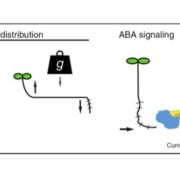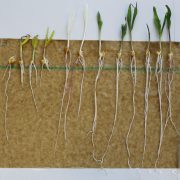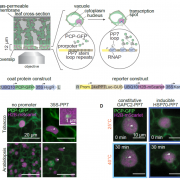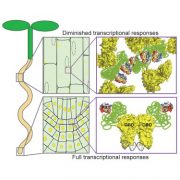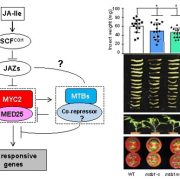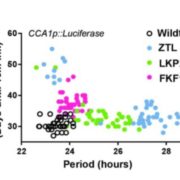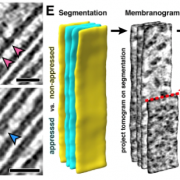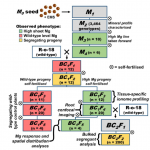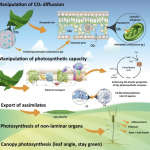A biosensor for the direct visualization of auxin (Nature)
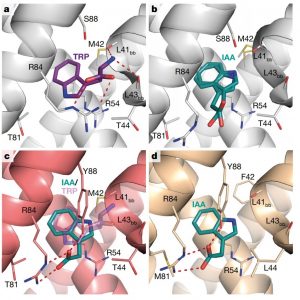 Auxin is an omnipresent, tryptophan-derived phytohormone that plays roles in innumerable physiological processes, so it is imperative to understand its distribution. Currently the best tools to do so employ the use of indirect sensors, such as the synthetic auxin-responsive promoter DR5. While invaluable, these tools suffer from being indirect. In addition, their readouts tend to be irreversible, preventing the study of transient auxin changes. Herud-Sikimić et al. thus developed an auxin biosensor, “AuxSen,” based on the bacterial tryptophan repressor. This genetically encoded sensor undergoes a conformation change upon direct binding to auxin, initiating a FRET signal that can be measured in vivo. Transgenic Arabidopsis lines bearing AuxSen under an inducible expression system corroborated the auxin distributions observed in seedling roots from previous work using DR5 reporter lines. The authors also report a previously-unobserved redistribution of endogenous auxin in roots upon gravistimulation. Given the many key discoveries that have been made in plant biology by studying auxin, it will be exciting to see what new findings this tool will elicit. (Summary by Benjamin Jin) Nature 10.1038/s41586-021-03425-2
Auxin is an omnipresent, tryptophan-derived phytohormone that plays roles in innumerable physiological processes, so it is imperative to understand its distribution. Currently the best tools to do so employ the use of indirect sensors, such as the synthetic auxin-responsive promoter DR5. While invaluable, these tools suffer from being indirect. In addition, their readouts tend to be irreversible, preventing the study of transient auxin changes. Herud-Sikimić et al. thus developed an auxin biosensor, “AuxSen,” based on the bacterial tryptophan repressor. This genetically encoded sensor undergoes a conformation change upon direct binding to auxin, initiating a FRET signal that can be measured in vivo. Transgenic Arabidopsis lines bearing AuxSen under an inducible expression system corroborated the auxin distributions observed in seedling roots from previous work using DR5 reporter lines. The authors also report a previously-unobserved redistribution of endogenous auxin in roots upon gravistimulation. Given the many key discoveries that have been made in plant biology by studying auxin, it will be exciting to see what new findings this tool will elicit. (Summary by Benjamin Jin) Nature 10.1038/s41586-021-03425-2


